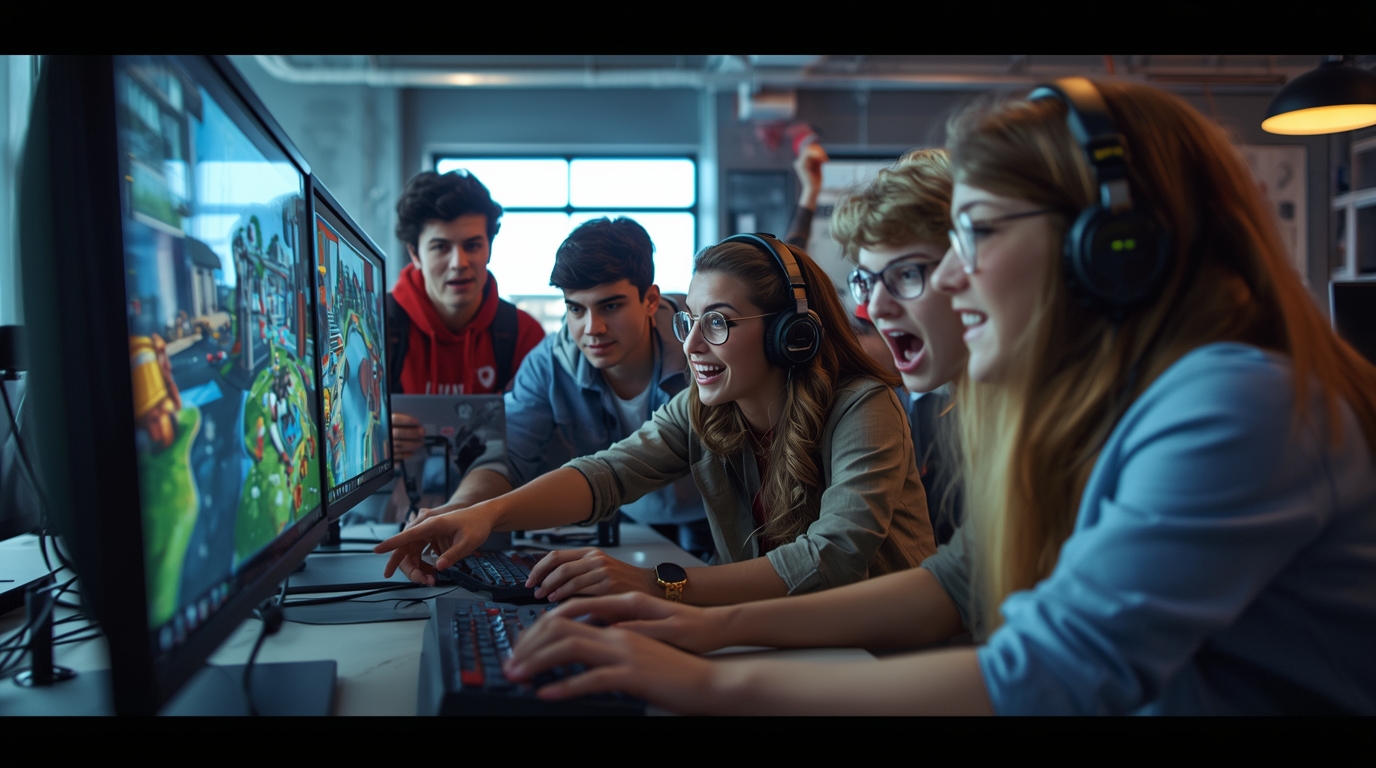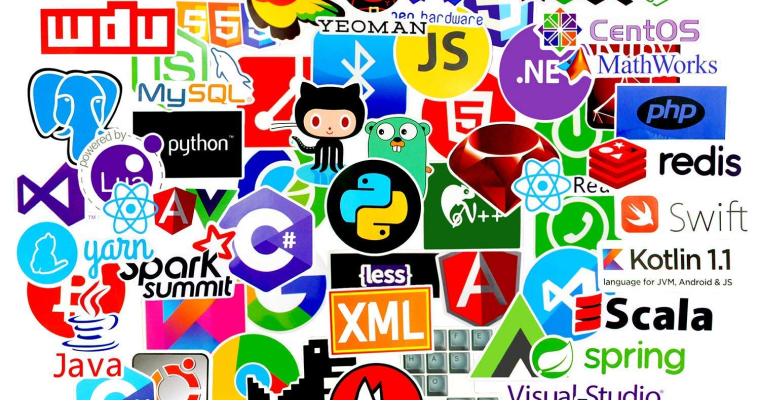Ever wondered what it’s like to drive a supercar at 200 mph straight into a wall? Or slam a monster truck through a series of explosive obstacles? Car crash simulator games let you experience the adrenaline-pumping thrill of high-speed collisions, catastrophic wrecks, and metal-crunching destruction—all from the safety of your couch.
These car games have exploded in popularity, offering everything from ultra-realistic physics simulations that would make engineers weep to arcade-style mayhem where chaos is the only rule. Whether you’re a curious gamer, a physics enthusiast, a driving safety educator, or someone who just loves watching things spectacularly fall apart, this comprehensive guide covers everything you need to know about car crash simulator games in 2025.
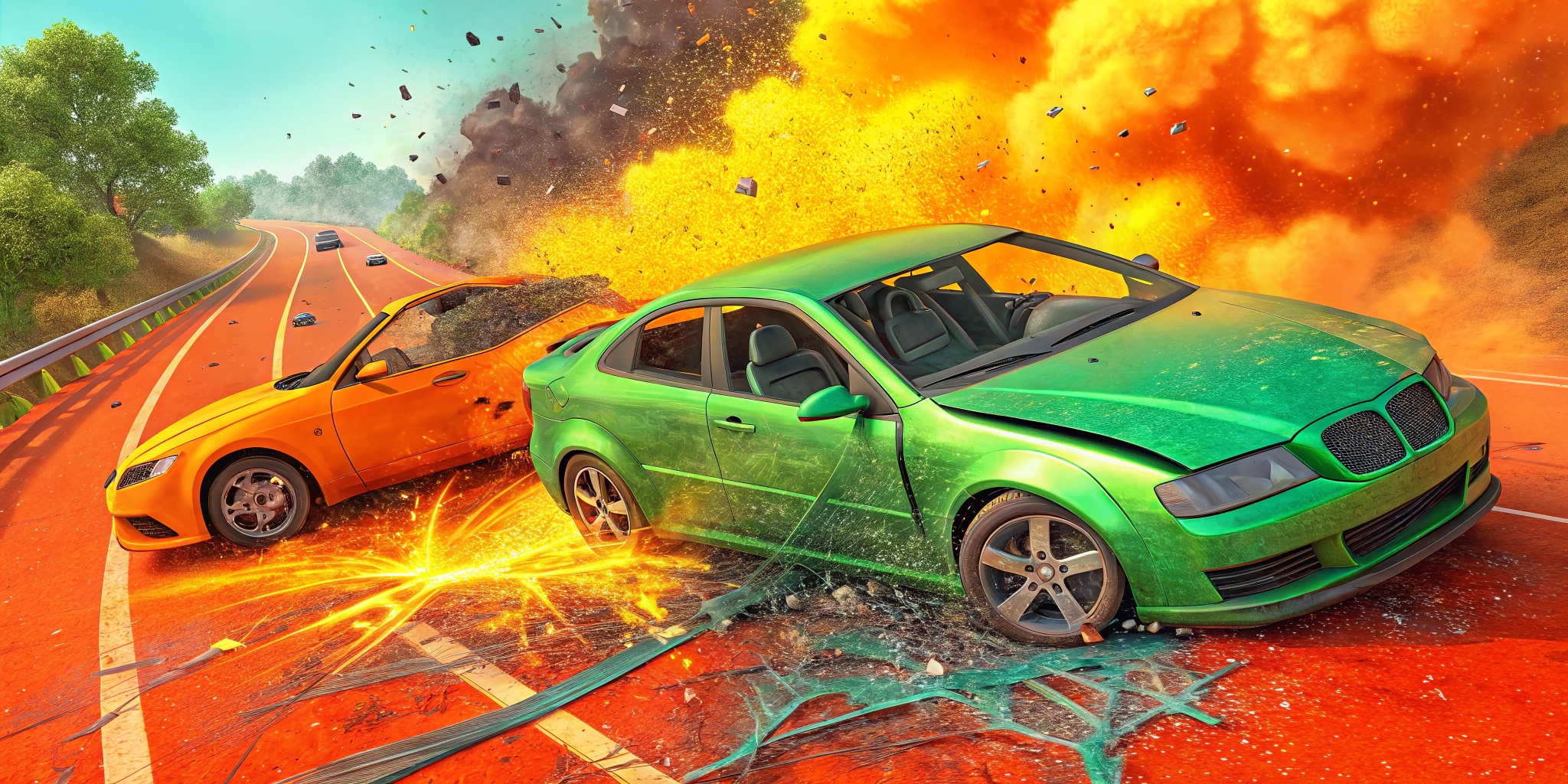
What Are Car Crash Simulator Games?
Car crash simulator games are video games that focus on simulating vehicle collisions, damage, and destruction with varying degrees of realism. Unlike traditional racing games where crashes are obstacles to avoid, these games make crashes the central feature—the main event you’re here to witness.
The core appeal includes:
Consequence-Free Destruction – Experience the visceral thrill of crashes without injury, legal trouble, or insurance claims. Smash expensive supercars, flip semi-trucks, or drive off cliffs with zero real-world consequences. It’s the ultimate stress relief, much like how best idle games provide relaxation through different mechanics.
Physics Fascination – Watch how vehicles crumple, deform, and shatter based on speed, impact angle, and materials. The best simulators use advanced physics engines that calculate every dent, scratch, and flying piece of debris.
Educational Value – These games demonstrate the violent forces involved in collisions, teaching players about momentum, impact physics, and the importance of vehicle safety features like crumple zones and airbags.
Stress Relief – Sometimes you just need to watch things break. Car crash simulators provide a safe outlet for destruction without harming anything real.
Experimental Playground – Test scenarios that would be impossible or dangerous in real life: what happens when you drive at 300 mph? How much damage can a car survive? What if you jumped a bus over 20 cars?
The genre ranges from serious simulations used by automotive engineers to test safety features, to arcade-style destruction derbies where entertainment trumps accuracy. Some games blend both approaches, offering realistic physics within absurd scenarios.
Similar to how car games unblocked provide quick entertainment, crash simulators deliver instant gratification—but with way more explosions and destruction.
History of Car Crash Simulator Games
Car crash simulator games have evolved dramatically over the past four decades, mirroring advances in computing power and physics simulation technology. The evolution mirrors the broader history of video games, from simple concepts to complex simulations.
The Early Days (1980s)
The journey began not as entertainment, but as serious training tools. In the early 1980s, emergency responders—firefighters, police officers, and paramedics—used primitive crash simulations to practice their skills. These early systems were rudimentary by today’s standards, offering basic visual representations of accident scenarios.
The first commercially available car crash simulator hit the market in 1984: “Crash!” for the Commodore 64 computer. This groundbreaking game let players choose a vehicle and deliberately crash it into walls or obstacles, with the explicit goal of causing maximum damage. It was revolutionary for its time—turning what was usually an accident into intentional gameplay.
The Console Revolution (1990s-2000s)
As technology advanced through generations of gaming hardware—from the best PS2 games era to the best GameCube games period—crash simulator games became more sophisticated.
Graphics improved dramatically during this period. What started as blocky, pixelated vehicles became increasingly detailed 3D models that actually looked like real cars. Players could finally see individual body panels flying off, windows shattering, and realistic deformation. Even the best 3DS games later showed how portable platforms could handle impressive crash physics.
The Modern Revolution (2010s-Present)
The 2010s brought a quantum leap in realism. Modern crash simulators use soft-body physics engines where every component of a vehicle is simulated in real-time using nodes (mass points) and beams (springs), making crashes feel visceral with incredibly accurate damage models.
Today’s top titles like BeamNG.drive, Wreckfest, and next-gen mobile simulators offer:
- Photorealistic graphics with ray tracing
- Real-time deformation of thousands of individual parts
- Accurate material properties (steel vs. aluminum vs. carbon fiber)
- Environmental interactions (weather, terrain, obstacles)
- VR support for immersive first-person crash experiences
Research and Safety Applications
Beyond entertainment, car crash simulators have become invaluable research tools. Scientists use them to study the effects of crashes on the human body, test new safety technologies, and develop improved vehicle designs. Automotive manufacturers run thousands of virtual crash tests before building physical prototypes, saving millions in development costs.
The technology has even influenced how real vehicles are designed. Crumple zones, airbag deployment systems, and structural reinforcements are all refined using simulation software descended from the same technology powering entertainment crash games.
Top Car Crash Simulator Games of 2025
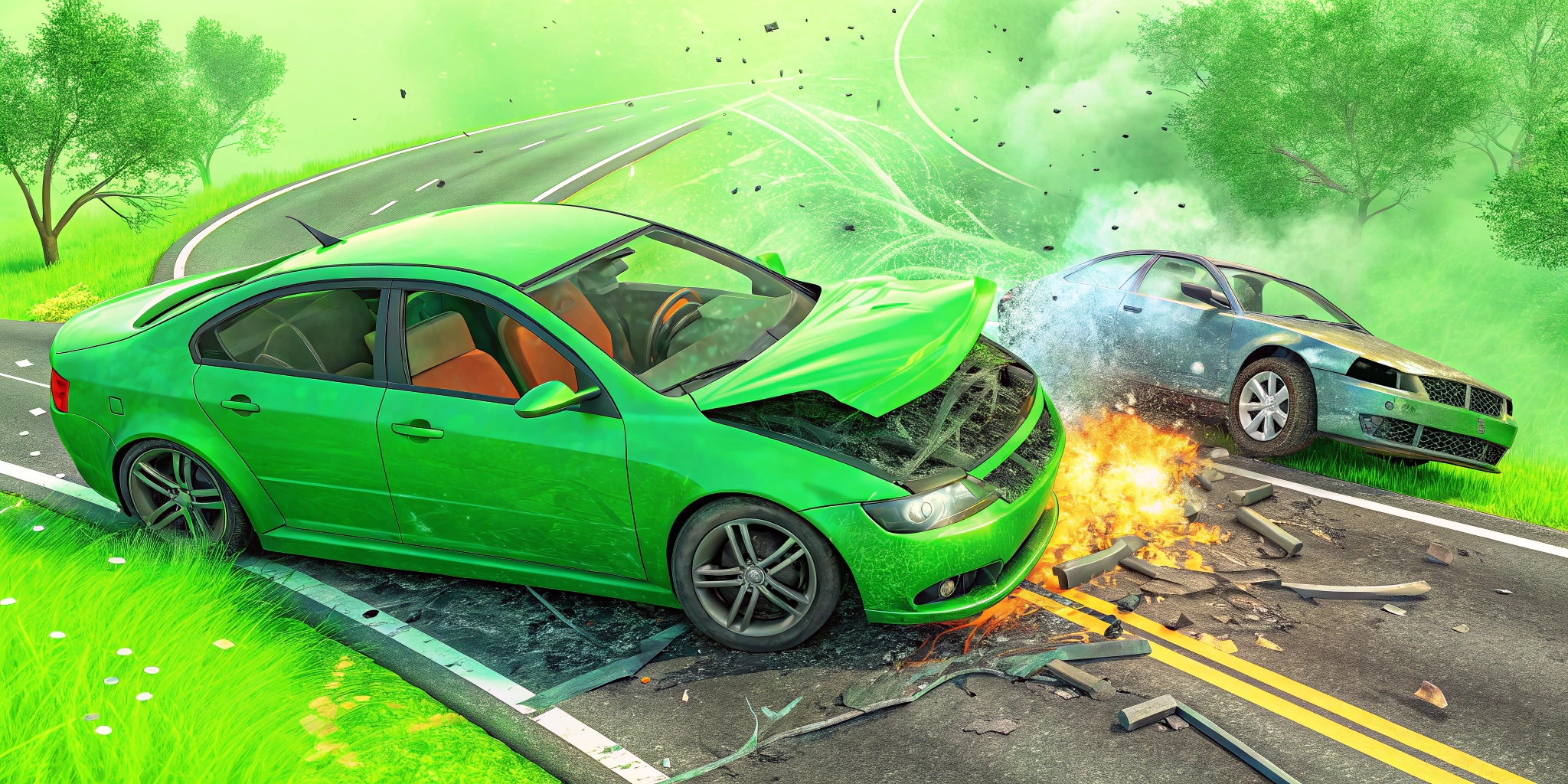
Let’s dive into the absolute best crash simulator games available right now, categorized by style and platform.
Realistic Physics-Based Simulators: For The Serious Crash Enthusiast
| Game | Platform | Price | Realism Score | Best Feature |
|---|---|---|---|---|
| BeamNG.drive | PC | $24.99 | 10/10 | Unmatched soft-body physics |
| Assetto Corsa Competizione | PC, PS5, Xbox | $39.99 | 9/10 | Racing sim with crash realism |
| CarX Drift Racing Online | Multi-platform | $14.99 | 8/10 | Drift physics with damage |
| Automation | PC | $34.99 | 8/10 | Build and crash your own cars |
BeamNG.drive: The Physics King
BeamNG.drive stands as the undisputed champion of realistic crash simulation, using an incredibly accurate damage model where every component of a vehicle is simulated in real-time. This isn’t just the best crash simulator—it’s a legitimate physics sandbox that happens to feature vehicles.
What makes BeamNG.drive special:
Soft-Body Physics Magic – Unlike games that use rigid bodies with pre-set crash animations, BeamNG calculates every single point of the vehicle in real-time. When you hit a wall at 80 mph, you’re witnessing actual physics simulation, not a canned animation. The hood crumples, the frame twists, doors rip off, and wheels break away—all calculated on the fly.
Infinite Scenarios – The game includes dozens of vehicles and maps, but the real depth comes from user-generated content. Want to see what happens when a bus falls 1,000 feet onto a highway? Done. Curious about a head-on collision between two semi-trucks at highway speeds? Easy. The only limit is your imagination (and your PC’s processing power).
Educational Depth – BeamNG is so accurate that it’s actually used by some automotive engineers and researchers. The level of detail in how materials deform, how energy dissipates through the vehicle structure, and how crashes affect stability is remarkable.
Modding Community – Thousands of user-created vehicles, maps, and scenarios keep the game fresh. From realistic replicas of real cars to fantasy creations, the workshop has it all.
Performance Requirements – The only downside? BeamNG is demanding on hardware. Those real-time physics calculations require serious CPU power, especially if you’re simulating multiple vehicles. Expect to invest in a decent PC for the best experience.
For anyone serious about crash simulation, BeamNG.drive is non-negotiable. It’s the game professional YouTubers use for crash test videos, the one that generates millions of views with its realistic damage demonstrations.
Assetto Corsa Competizione: Racing Meets Reality
While primarily a hardcore racing simulator, Assetto Corsa Competizione deserves mention for its crash realism. The game’s advanced physics engine provides accurate simulations of vehicle dynamics, and when crashes happen, they’re spectacular.
ACC is perfect for players who want a complete driving experience—the thrill of racing at the limit combined with the consequences of getting it wrong. The game doesn’t glorify crashes, but it doesn’t pull punches either. Misjudge a corner at 150 mph and you’ll experience a frighteningly realistic series of impacts, flips, and slides.
Arcade-Style Crash Games: Maximum Mayhem, Maximum Fun
| Game | Platform | Price | Fun Factor | Destruction Level |
|---|---|---|---|---|
| Wreckfest | Multi-platform | $29.99 | 10/10 | Extreme |
| Burnout Paradise Remastered | Multi-platform | $29.99 | 9/10 | High |
| FlatOut 4: Total Insanity | PC, PS4, Xbox | $19.99 | 8/10 | Very High |
| Demolition Derby 3 | Mobile | Free (IAP) | 7/10 | High |
Wreckfest: The Destruction Derby King
If BeamNG.drive is the physics professor of crash games, Wreckfest is the wild party animal who shows up and trashes the place—in the best way possible.
Why Wreckfest dominates:
Destruction as Gameplay – Every race mode rewards aggressive driving, side-swiping opponents, and causing spectacular pile-ups. The physics engine provides realistic damage while keeping the action fast and fun.
Variety of Chaos – From traditional races on dirt tracks to demolition derbies in figure-8 arenas to bus racing competitions, Wreckfest offers endless variety. One moment you’re racing souped-up lawnmowers, the next you’re driving a hearse through a obstacle course.
Multiplayer Mayhem – Online multiplayer turns into glorified destruction derbies where strategy involves not just driving fast, but knowing when to ram opponents into walls. The social aspect amplifies the fun exponentially.
Customization – Build and customize your vehicles with performance upgrades and visual modifications. Then immediately wreck them in the most spectacular way possible.
Balanced Physics – Wreckfest threads the needle between arcade fun and realistic damage. Cars crumple convincingly, debris flies everywhere, and the impact feels weighty—but it never becomes frustratingly realistic where one crash ends your race.
Wreckfest is perfect for players who want action, competition, and destruction without worrying about technical accuracy. It’s pure, unfiltered fun that delivers satisfying crashes every single time.
Burnout Paradise Remastered: The Classic Returns
EA’s remastered version of the beloved Burnout Paradise brings updated graphics and improved performance to one of the greatest arcade racers ever made. The game’s “Crash Mode” remains legendary—a mode specifically designed around causing maximum destruction.
Players launch their vehicles into busy intersections with the goal of causing the biggest, most expensive pile-up possible. It’s strategic destruction: you need to time your entry, choose the right vehicle, and use special takedowns to maximize carnage. The slow-motion replays showing multi-million dollar pile-ups never get old.
Beyond Crash Mode, the open-world racing features breathtaking takedowns where you aggressively wreck opponents while maintaining breakneck speeds. The remaster preserves everything that made the original special while making it look gorgeous on modern hardware.
Mobile Car Crash Simulators: Destruction On The Go
| App | Platform | Price | Graphics | Addictiveness |
|---|---|---|---|---|
| Crash of Cars | iOS, Android | Free (IAP) | 8/10 | Very High |
| Real Racing 3 | iOS, Android | Free (IAP) | 9/10 | High |
| BeamNG.drive Mobile | Android | $4.99 | 7/10 | High |
| Derby Destruction Simulator | iOS, Android | Free (IAP) | 7/10 | Medium |
Crash of Cars: Addictive Mayhem
This mobile game offers a fun and accessible crash experience with cartoonish graphics and simple controls. It’s perfect for quick sessions during commutes or breaks, much like other accessible unblocked games that provide instant entertainment.
The gameplay loop is brilliantly addictive: collect power-ups, bash opponents, survive as long as possible, unlock new vehicles. The cartoon aesthetic keeps things light and family-friendly while still delivering satisfying impacts. Various game modes and regular updates keep players coming back.
Real Racing 3: Premium Mobile Racing
While primarily a racing game, Real Racing 3’s crash physics are surprisingly sophisticated for a mobile title. The advanced graphics engine provides realistic damage, and the game doesn’t shy away from showing the consequences of high-speed impacts.
The game shines with its variety of real-world licensed vehicles, officially sanctioned tracks, and multiple game modes. When crashes happen—and they will—the damage modeling and physics response are impressive enough to satisfy crash enthusiasts alongside the main racing experience.
Browser-Based and Unblocked Games
For players seeking instant access without downloads, several quality crash simulators run in web browsers. These games are perfect for school or work breaks (when appropriate!), offering quick destruction fixes without installation requirements.
Unblocked games platforms often feature simplified crash simulators alongside other casual games, providing accessible entertainment anywhere.
The Science Behind Car Crash Simulator Games: How They Actually Work
Understanding the technology powering these games makes them even more fascinating. Let’s break down the key systems:
Physics Engines: The Brain Behind The Chaos
Modern crash simulators rely on sophisticated physics engines that calculate forces, momentum, and material properties in real-time. These engines are the same technology used in film special effects, architectural simulations, and scientific research.
Key physics engine technologies:
Soft-Body Physics – The most advanced approach where every component is simulated using nodes (mass points) and beams (springs), allowing for realistic deformation and damage. BeamNG.drive pioneered this approach in gaming, creating truly dynamic crashes where no two impacts are identical.
Rigid-Body Physics – Older but still effective, rigid-body physics treats objects as solid, undeforming shapes. While less realistic, this approach requires far less computing power, making it ideal for multiplayer games or mobile platforms where performance matters.
Hybrid Systems – Many modern games combine approaches: rigid bodies for basic movement with soft-body calculations triggered during collisions. This balances realism with performance.
Popular Physics Engines:
- PhysX (Nvidia) – Industry-standard engine offering realistic collisions, vehicle deformation, and dynamic objects
- Havok – Used in many AAA games for vehicle physics and destruction
- Bullet Physics – Open-source engine popular with indie developers
- Custom Solutions – BeamNG’s proprietary soft-body system, Wreckfest’s custom destruction engine
These engines account for numerous factors:
- Vehicle weight and mass distribution
- Speed and direction of impact
- Impact angle and point of contact
- Material properties (steel, aluminum, carbon fiber, plastic)
- Structural weak points and reinforcements
- Energy dissipation through crumple zones
- Rotational forces and momentum
- Environmental factors (friction, terrain, obstacles)
The computational requirements are massive. Calculating thousands of individual points, their connections, and how forces propagate through the structure demands serious processing power. This is why the most realistic simulators require high-end gaming PCs.
Damage Modeling: Making It Look Real
Physics calculations determine how things break, but damage modeling determines how they look while breaking. Modern games use multiple sophisticated techniques:
Mesh Deformation – Vehicle models are built with flexible meshes that can deform based on impact forces. Advanced systems use thousands of vertices that can each move independently, creating realistic crumpling, bending, and tearing.
Fracture Systems – Pre-determined break points allow specific components to shatter, detach, or break away. Windows spider-web before shattering, body panels rip at welded seams, wheels break off suspension components.
Particle Systems – Debris, sparks, smoke, glass shards, fluid leaks—all generated by particle emitters that spawn thousands of small objects during crashes. Advanced systems track these particles as they bounce, scatter, and settle.
Texture Damage – Beyond deformation, vehicles accumulate visual damage: scratches, dents, paint scrapes, burn marks, dirt, and fluid stains. Multiple damage layers combine to show progressive deterioration.
LOD Systems – Level of Detail systems balance visual quality with performance, showing high-detail damage up close while simplifying distant vehicles.
The best crash simulators layer all these systems together. You see the body deform, watch specific parts break away, notice debris scattering, and observe detailed surface damage—all calculated in real-time based on the specific crash circumstances.
Graphics and Visual Effects: Making It Spectacular
Physics and damage modeling provide the foundation, but graphics bring crashes to life visually.
Modern Rendering Techniques:
Ray Tracing – Real-time ray tracing creates photorealistic lighting, reflections, and shadows. Watch sunlight reflect off crumpled metal or see your battered vehicle mirrored in puddles.
Volumetric Effects – Smoke, dust, steam, and fire rendered as three-dimensional volumes rather than flat sprites create convincing atmospheric effects. Crashes generate billowing clouds of debris-filled air.
Motion Blur and Depth of Field – Camera effects that mimic human vision, emphasizing speed and focusing attention on key moments during crashes.
Screen Space Reflections – Efficient technique for realistic reflections on metallic and glass surfaces without the performance cost of full ray tracing.
High-Resolution Textures – 4K and even 8K textures showing every paint chip, rust spot, and carbon fiber weave pattern.
Sound Design: The Forgotten Hero
Visual spectacle grabs attention, but sound design sells the impact—literally. Professional crash games invest heavily in audio:
Layered Sound Effects:
- Metal crunching and tearing (different sounds for different metals and impact forces)
- Glass shattering (varying pitch and intensity based on window type and impact)
- Engine sounds changing as damage occurs
- Tire screeching modulated by surface type and speed
- Environmental sounds (debris bouncing, ambient traffic, weather)
- Hydraulic failures, belt snapping, fuel ignition
Dynamic Audio – Modern games adjust sound based on camera position, vehicle speed, damage level, and environment. The same crash sounds different from inside the car versus an external camera, or nearby versus distant.
3D Spatial Audio – Surround sound and binaural audio create directional soundscapes. You hear the approaching vehicle from the left, the impact in front, and debris scattering all around.
The best sound design is felt as much as heard. Proper audio mixing creates visceral impact that makes crashes feel real, even when graphics aren’t perfect. The combination of low-frequency rumbles, mid-range crunching, and high-frequency tinkling glass creates an audio signature your brain recognizes as “major impact.”
Gameplay Mechanics
Different games emphasize different mechanics, but most crash simulators share common gameplay elements:
Core Mechanics
Free-Drive Mode – Open-world or arena-based exploration where you choose what to crash and how. This sandbox mode lets you experiment without objectives or restrictions. Perfect for testing different scenarios or just causing chaos, similar to the freedom found in the field of dreams game where players explore possibilities.
Scenario Challenges – Pre-designed challenges with specific objectives: “achieve maximum damage,” “survive 10 impacts,” “knock opponent vehicles off the platform,” or “complete the course while sustaining specific damage thresholds.”
Time Trials – Race against the clock while strategically using crashes to shortcut, eliminate obstacles, or take down opponents.
Multiplayer Chaos – Online modes where multiple players compete or cooperate in destruction-focused challenges. From last-car-standing battles to collaborative demolition projects.
Career/Progression – Many games feature progression systems where you unlock new vehicles, tracks, customization options, and game modes by completing challenges and earning currency.
Control Schemes
Crash test simulator 3D games offer a variety of control schemes to the players. Most crash simulators offer multiple control schemes to accommodate different platforms and player preferences:
Keyboard/Mouse (PC)
- Simple controls but less nuanced steering
- Perfect for quick, arcade-style gameplay
- Easy to pick up for casual sessions
Gamepad (Console/PC)
- Analog stick steering provides smooth control
- Trigger-based acceleration and braking feels natural
- Vibration feedback enhances crash impact
- The standard for most players
Steering Wheel/Pedals (PC)
- Ultimate immersion and precise control
- Required for serious simulation enthusiasts
- Force feedback wheels physically resist during crashes
- Expensive but transformative for dedicated players
Touch Controls (Mobile)
- Simplified controls optimized for touchscreens
- Usually accelerometer steering or virtual buttons
- Accessibility prioritized over precision
The best games offer multiple control options with customizable sensitivity, helping players find their comfort zone regardless of input method.
Replay Systems: Relive The Destruction
One of the most satisfying features in crash games is the replay system. After a spectacular crash, you can:
Multi-Angle Views – Watch from driver’s perspective, chase cam, cinematic angles, or free-flying cameras Slow Motion – See exactly how damage progressed frame-by-frame Free Camera – Pause and move the camera to examine damage from any angle Sharing Tools – Export replays as videos to share on social media Analysis Tools – Some serious simulators include data overlays showing forces, speed, impact points, and damage accumulation
Replay systems transform good crashes into shareable moments. The ability to capture and showcase your most spectacular wrecks adds longevity and social value to single-player games.
Damage Modeling
Car crash simulator games are designed to provide an immersive experience of car accidents. One of the key features of extreme car crash simulator games is the damage modeling system. The damage modeling system simulates the effects of a car crash on the vehicle, including the deformation of the car body, the breaking of windows, and the detachment of parts.
The damage modeling system is often based on physics simulation, which means that the deformation of the car body and the detachment of parts are calculated based on the laws of physics. This provides a realistic representation of the effects of a crash test simulator online on the vehicle.
Educational Value: Learning Through Virtual Destruction
While primarily entertainment, car crash simulators offer genuine educational benefits that extend beyond simple gaming:
Driving Safety Training
Progressive driving schools and safety programs increasingly incorporate crash simulators as teaching tools:
- Consequence Visualization – Students witness the violent results of dangerous behaviors: speeding, distracted driving, aggressive lane changes, drunk driving simulations. Experiencing consequences virtually creates lasting impressions without risk.
- Defensive Driving Practice – Simulators let students practice emergency maneuvers: sudden stops, evasive swerving, loss-of-control recovery, and collision avoidance. Repetition builds muscle memory that can save lives in real emergencies.
- Judgment Development – Players learn to estimate speeds, judge stopping distances, and recognize dangerous situations before they develop. These judgment skills transfer to real-world driving.
- Risk Assessment – Understanding how small increases in speed dramatically increase crash severity teaches respect for speed limits and safe driving practices.
Studies show that interactive, consequence-focused training creates stronger behavioral changes than traditional instruction alone. When students feel the violence of a crash through simulation, they’re more likely to drive carefully in reality.
Vehicle Safety Testing and Design
Beyond driver education, crash simulators serve the automotive industry:
- Virtual Crash Testing – Manufacturers run thousands of simulated crashes before building physical prototypes. This tests structural designs, safety feature effectiveness, and identifies weak points—all without destroying real vehicles.
- Safety Feature Evaluation – How effective are crumple zones? Where should airbags deploy? How much force reaches the passenger compartment? Simulations answer these questions through precise measurement impossible in physical testing.
- Comparative Analysis – Test identical crashes across different vehicle types, comparing cars versus trucks, steel frames versus aluminum, various safety feature configurations.
- Cost Reduction – Physical crash tests destroy expensive prototypes. Simulation allows hundreds of tests for the cost of computing time, dramatically reducing development expenses.
The technology in games like BeamNG.drive shares DNA with professional automotive simulation software, just optimized for gaming hardware and consumer use.
Physics Education
For students learning physics, crash simulators provide intuitive demonstrations:
- Newton’s Laws in Action – Momentum, inertia, force, acceleration—all vividly demonstrated through crashes
- Energy Transfer – Kinetic energy converts to deformation and heat during impacts
- Material Science – Different materials respond differently to forces
- Structural Engineering – How design affects strength, rigidity, and failure modes
Teachers have discovered that letting students crash virtual cars teaches physics concepts more effectively than textbook problems alone. When you can see momentum conservation or watch energy dissipate through vehicle deformation, abstract equations become concrete understanding.
Graphics and Audio in Car Crash Simulators
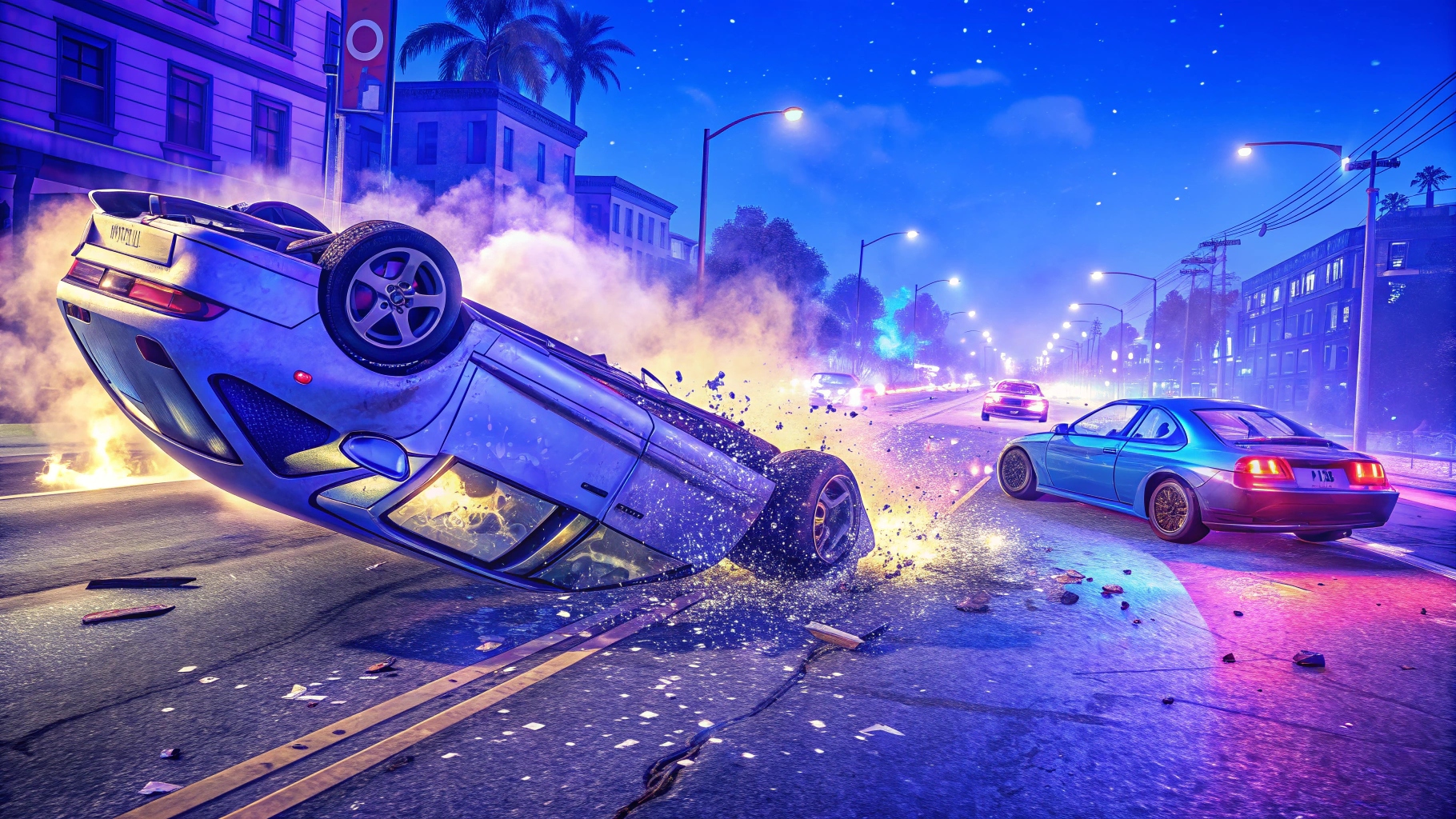
Visual Effects
One of the most important aspects of car smash simulators is the visual effects. The graphics must be realistic enough to make the player feel like they are in a real car crash. The level of detail in the graphics can make or break the game’s immersion factor.
The best car crash simulators use high-quality graphics that are optimized for gaming. They use advanced lighting techniques, realistic physics engines, and high-resolution textures to create the most realistic crash scenes possible. The cars and environments are designed to look and feel like real-life counterparts.
Sound Design
Sound design is another important aspect of car crash simulators. The sound effects must be realistic enough to make the player feel like they are in a real car crash. The sound of metal crunching, glass shattering, and tires screeching all add to the immersion factor of the game.
The best car crash simulators use high-quality sound effects that are optimized for gaming. They use advanced audio techniques to create realistic soundscapes that match the visuals. The sound effects are designed to be dynamic and change depending on the severity of the crash.
Overall, the graphics and audio in car crash simulators are crucial to the player’s experience. High-quality graphics and sound effects can make the player feel like they are in a real car crash, while low-quality graphics and sound effects can ruin the immersion factor of the game.
Physics Engines and Simulation Technology
Car driving crash simulator titles rely heavily on physics engines and simulation technology to create realistic and immersive experiences for players. These engines simulate the laws of physics, such as gravity, friction, and momentum, to accurately depict the behavior of objects in a virtual environment.
One example of a popular physics engine used in car crash simulator games is the PhysX engine developed by Nvidia. This engine allows for realistic collisions, deformation of vehicles, and dynamic objects in the game environment. The engine also takes into account factors such as vehicle weight, speed, and angle of impact to determine the outcome of each collision.
Simulation technology is also a crucial component in creating an authentic car crash simulator royale. This technology allows for the creation of realistic environments, weather conditions, and vehicle models. It also enables developers to accurately simulate the behavior of different types of vehicles, such as sports cars, trucks, and motorcycles.
In addition to physics engines and simulation technology, developers also use motion capture technology to capture realistic movements of vehicles and objects in the game. This technology allows for the creation of realistic animations and movements that add to the overall immersion of the game.
Overall, the combination of physics engines, simulation technology, and motion capture tech allows devs to create realistic and engaging car crash simulator mobile games that provide players with an felt so real game fun.
User-Generated Content and Modding
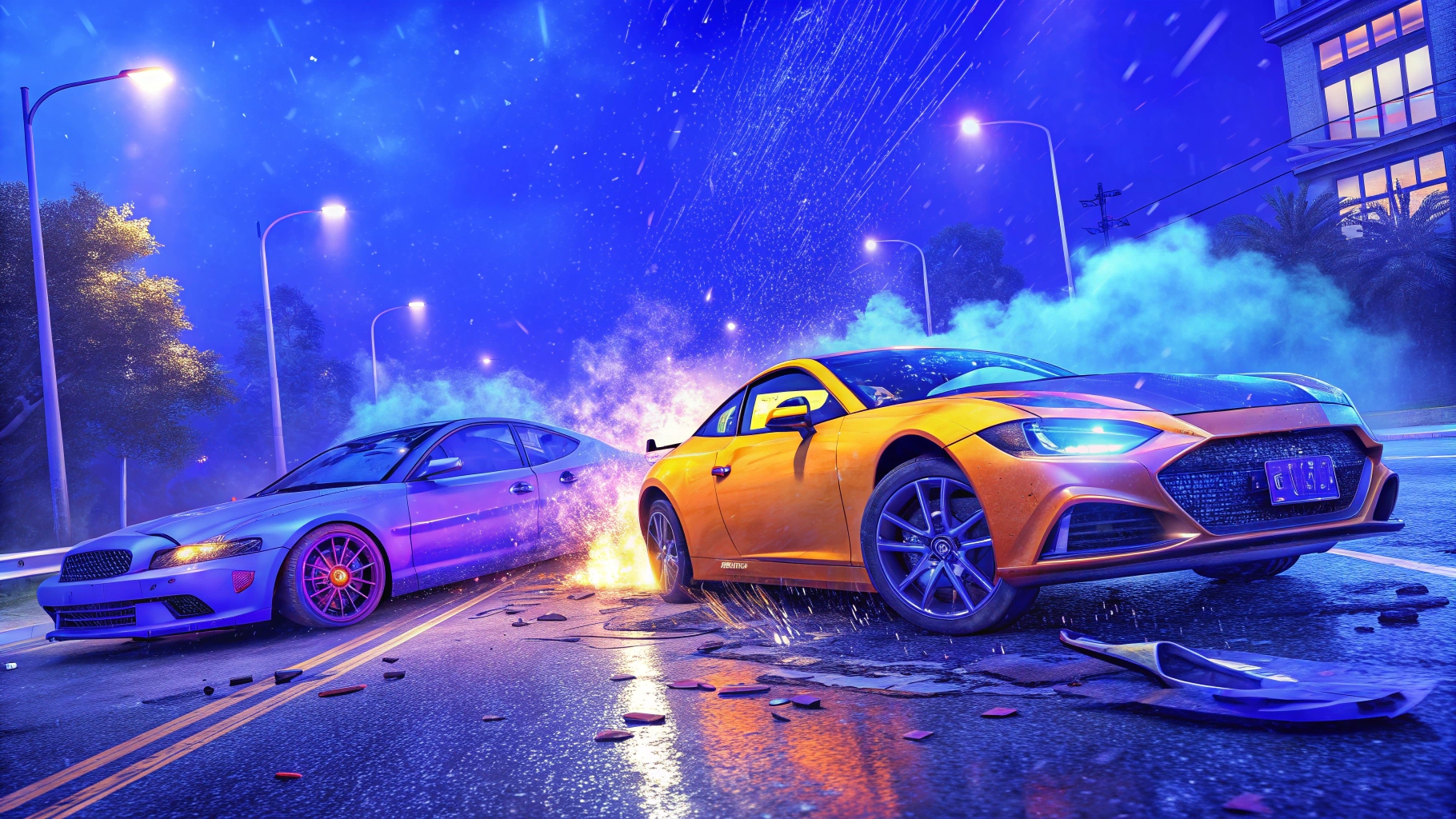
Car Crash Simulator Games are known for their realistic gameplay mechanics, but what truly sets them apart from other racing games is the ability for users to create their own content and modify the game. This section will explore the different ways in which users can create and modify content in these games.
Custom Scenarios
One of the most popular features of Car Crash Simulator Games is the ability to create custom scenarios. Users can create their own tracks, set up obstacles, and even choose the type of car they want to use. This allows for endless possibilities and provides players with a unique experience every time they play.
Custom scenarios are often shared among the community, allowing players to download and play others’ creations. This creates a sense of community and encourages players to experiment with different scenarios.
Modding Communities
Modding is the process of modifying a game’s code to create new content or change the way the game is played. Car Crash Simulator Games have a large modding community, with players creating new cars, tracks, and even gameplay mechanics.
Modding communities often have their own websites and forums where users can share their creations and collaborate with others. This creates a sense of community and encourages players to experiment with different mods.
Overall, user-generated content and modding are important aspects of Car Crash Simulator Games. They allow for endless possibilities and create a sense of community among players.
Safety and Education Through Simulation
Car crash simulator games are not only a source of entertainment but also a valuable tool for education and safety. These games allow players to experience the consequences of reckless driving and learn about vehicle safety in a safe and controlled environment.
Driving Safety Training
One of the main benefits of car crash simulator accident games is that they can be used as a training tool for driving safety. By simulating different driving scenarios, players can learn how to react in dangerous situations and avoid accidents. For example, players can learn how to brake effectively, swerve to avoid obstacles, and navigate through traffic.
Car crash test simulator 3D can also be used to teach defensive driving techniques. These techniques include maintaining a safe following distance, scanning the road ahead for potential hazards, and anticipating the actions of other drivers. By practicing these techniques in a simulated environment, players can develop the skills they need to stay safe on the road.
Vehicle Safety Testing
Car crash simulation physics games can also be used to test the safety of vehicles. By simulating different crash scenarios, game developers can evaluate the effectiveness of safety features such as airbags, seat belts, and crumple zones. This information can then be used to improve the safety of real-world vehicles.
In addition, car crash simulator PC games can be used to test the safety of different types of vehicles. For example, game developers can simulate crashes between cars and trucks to evaluate the effectiveness of safety features in different types of vehicles.
Overall, car crash simulator games are a valuable tool for education and safety. By providing a safe and controlled environment for learning, these games can help drivers develop the skills they need to stay safe on the road.





